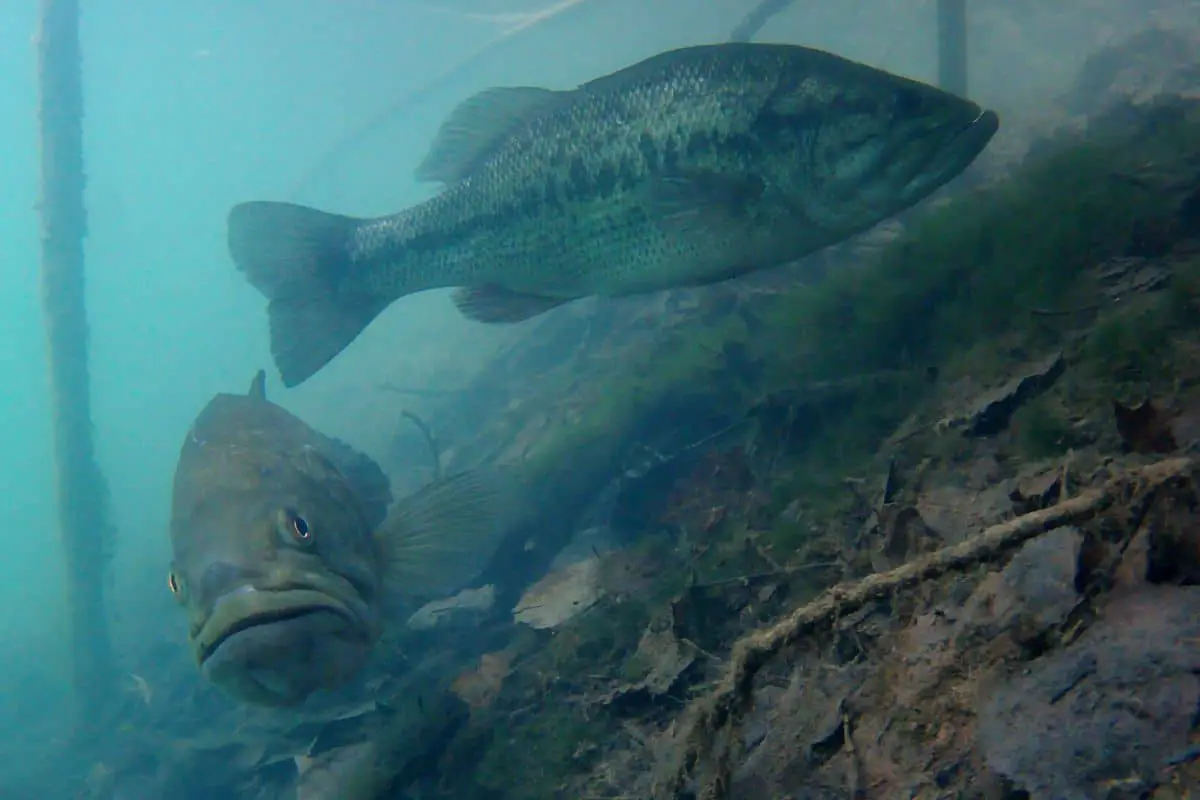Bass anglers get excited about the spawn. Huge fish are moving up all over, but then what happens after all those giant female bass leave the nest?
Look for big female post-spawn bass to travel the same routes they took to the spawning areas. Find the thickest cover closest to the beds and keep working towards deeper water access.
In this article, we will break down where exactly to look for post-spawn bass and what lures work well to target them.
Focus on the Pre-Spawn Travel Routes
Bass love edges. I cannot stress that enough. To get an idea of how bass use edges under the water, watch whitetail deer. The similarities between how deer and bass use edges are uncanny. I have filmed bass moving and cruising about for hundreds of hours and witnessed this many times.
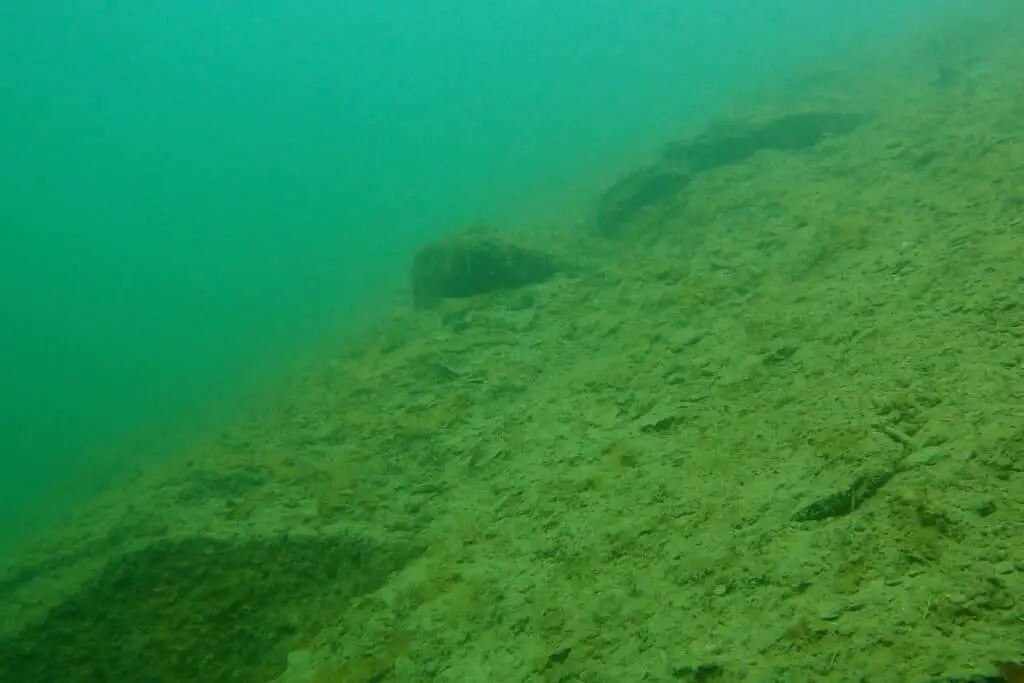
The toughest part of post-spawn bass fishing is finding the micro-edges. Let me explain. We can easily see big, or macro-edges. This would qualify as the edge of brush, the edge of rip-rap, etc.
But bass will use micro-edges all year. These are smaller and not always obvious to us because they are entirely below the water line. A micro-edge can be where one size of rock transitions into another. It could be the inside or outside edge of a weedline, or where one type of vegetation runs into a second species of plant.
These are the edges that bass will follow and during the post-spawn, it is these hidden highways that bass migrate along.
So why is this important and how do we find these changes?

Paying close attention to what your lure is making contact with is the key. And then when you get a bite anglers need to attempt to decipher what that fish was holding on. This is tough because we often are excited about fighting the bass, but if we can decipher the cover based on “feel,” then we are much more apt to make this bite repeatable.
Bass will travel the same routes they took during the pre-spawn but in reverse. If you can think about where you caught fish before they hit the beds, these same key areas will be important to check.
(Here is an article on whether bass like shallow or deep water?)
Keep in Mind the Big Female Bass Are Exhausted from Spawning
There will be a period of time when the female bass are not very interested in eating. Not saying they won’t bite a lure, but the strenuous spawning process means they are not going to chase bait all over the place.
Their strike zone is considerably smaller right now which makes fishing seem impossible.
If you need to feel that aggressive bite, keep in mind the male bass are going to be guarding the fry and will attack lures with a vengeance while the female bass are recuperating.
Be sure to put those male bass back immediately if you catch one that is protecting a ball of fry.
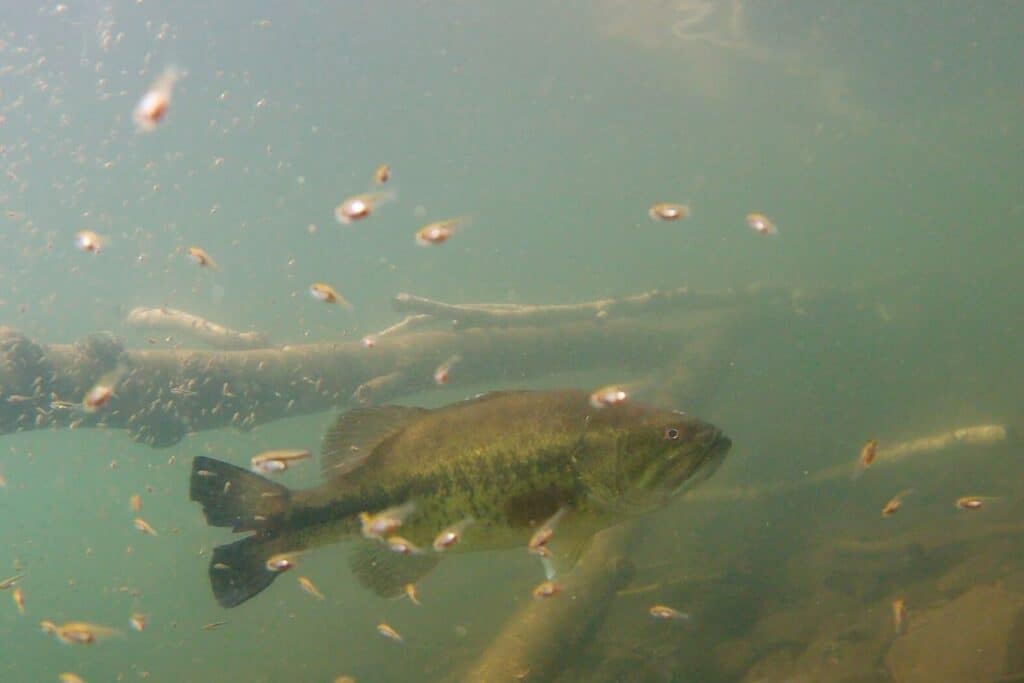
Check the Thickest Cover Near the Spawning Beds
When the beds are empty of bass we often immediately assume they traveled a distance.
This may not be the case yet. Check the thickest cover you can find near the bedding areas. Lakes with heavy vegetation see this happen often.
The bass will spawn in the more sparse grass where the sun will warm the water. Once the eggs have been laid, the females will often slink back into the nearby thick vegetation before migrating off.
This could be a movement of only 10 feet.
When anglers have been on the water consistently during the spawning process they likely know when beds were occupied and when the bass first moved off them. This is the exact time the thick cover closest to the beds can yield big dividends. It is a short window of opportunity but always worth checking.
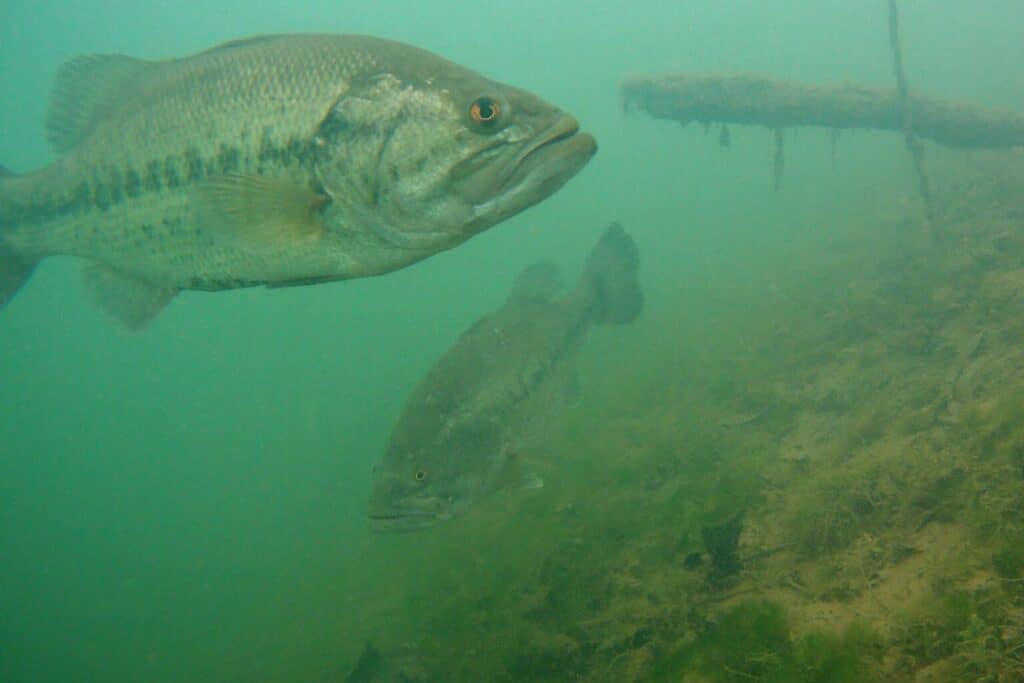
The First Break and What That Really Means
We hear this a lot – check the first break. Where is this and what does this mean?
On an exaggerated scale, this can be a creek ledge closest to spawning flats, but that is not necessarily the first place the big female bass go. It is often where they finally end up.
A depth change to a bass can be much more subtle. A bottom contour variation of a foot can be the “first break” we often talk about.
So how do we locate this?
Once again, it is key to start where the spawning beds were. Now pay attention to what direction that change could be. On some bays that is going to be a move perpendicular to the shoreline and straight out towards deeper water. In other locations, that can mean making a parallel movement with the shoreline and heading to a more noticeable contour change. Decide which movement is most likely based on what the location offers the bass for the long haul through the summer months.
In the bay pictured below, the maximum depth is only 10 feet. The north bank sees lots of spawning action. When the females move, instead of heading towards the bottom of the bay where there is little to hold them all summer, they migrate the short distance to the mouth and then stay there for a few days. In fact, the mouth of this bay always sees massive bluegill beds. There will be bass hold in this general area clear through the panfish spawn.
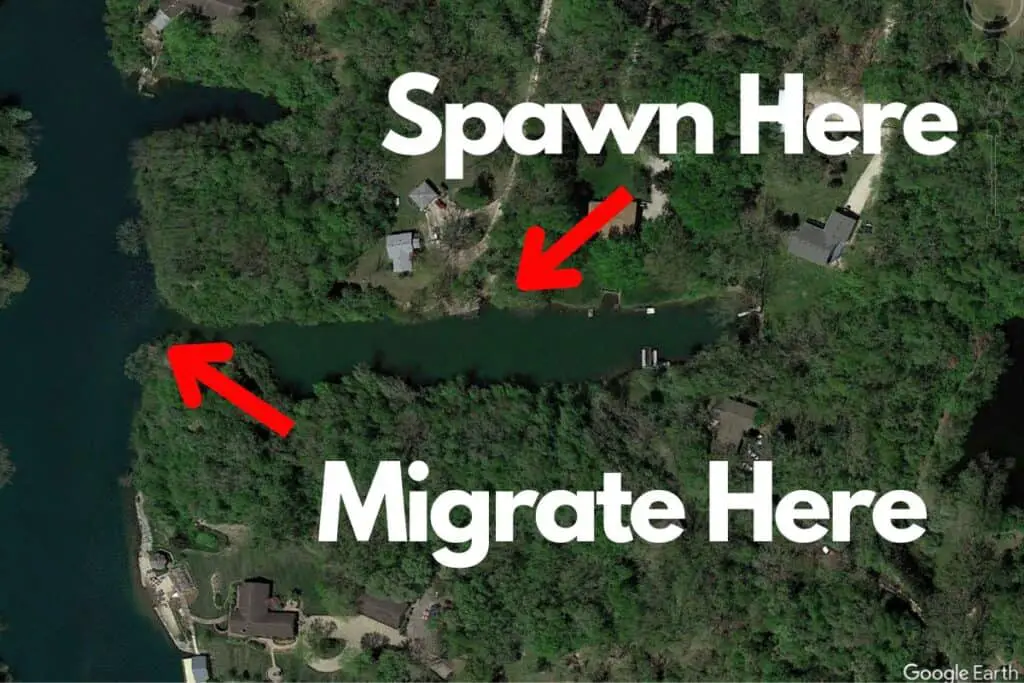
Remember, the bass are heading towards areas where they have plenty of resources to survive and thrive during the hottest part of the year. Food, cover, and access to deeper water are all things to look for.
On larger reservoirs, this means bass in the back of creek arms are going to keep moving to and past all the secondary points. If it is a small creek arm and shallower water, then eventually the fish will most likely position on the main lake point.
In large creek arms, there are always going to be bass positioned along the length of it. Keep hitting each secondary point until you notice life and start to get some bites.
Lures to Decipher the First Break
Lures and presentations that make solid bottom contact are great tools to determine what the lake bed is really doing.
My favorite presentations include deep diving crankbaits, Carolina rigs, heavier jigs, and Texas rigs.
All of these allow me to cover water and search while maintaining solid bottom contact. It is important to decipher where bites come from when you get one. Having a complete understanding of what the bottom composition is, along with the depth, will give you the information to be successful.
Once some fish are located with these presentations, there may be better lures to work carefully through an area. Especially if the bite is tough and you are dealing with adverse conditions like a cold front.
For example, I may find the bass with a Carolina rig and then use a shaky head once I have a smaller area dialed in.
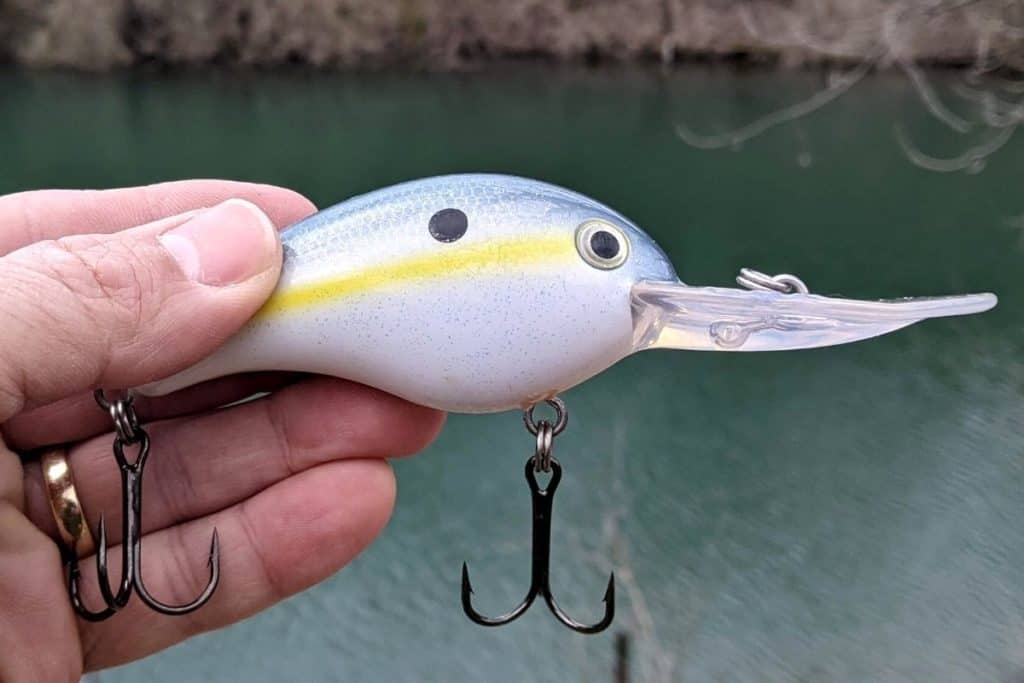
Lure Size and Post-Spawn Fishing
This is my thought on the situation and what I try first.
These female bass have expended a lot of energy over the last few weeks. They need to recover and bring in some calories without expending too much energy to do so.
Bigger baits and offerings with a bulkier profile are perfect.
Swim baits, glide baits, jigs with big trailers, and larger crankbaits all present as a meal worth the effort. I also love to imitate panfish, like bluegills, during this time. Gills are plentiful and offer a quality meal for big bass.
When the bite is challenging and switching to finesse presentations is what needs to happen, I will start with finesse lures like a Neko and Shaky Head because I can still use a full-size finesse worm and present that bigger food source. If those presentations fail, then I will resort to ultra-finesse tactics like Ned rigs and drop shots.
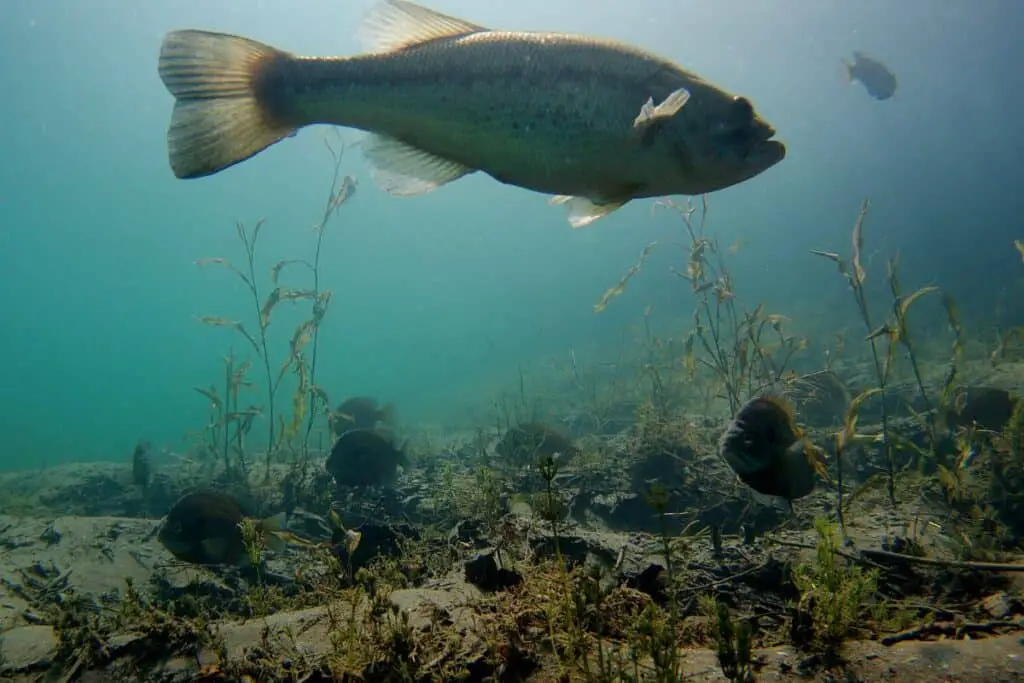
Never Forget About Shallow Post-Spawn Bass
We get obsessed with dredging deep water in the post-spawn.
Don’t forget about the shallow bass during these weeks after the spawn. The spring is when we will see the most prey species in the shallows.
As mentioned earlier, the panfish are getting on the beds, the shad spawn is about to happen and crawfish are in the middle of the action as well.
Bass devour all these species and most of them are going to be in shallow water after the bass are done on the beds. It is worth the effort to check skinny water and travel routes before spending time on deeper water haunts.
Good luck during the post-spawn and be sure to encourage someone today. You never know how you may change their life forever.
Isaiah 6:8

